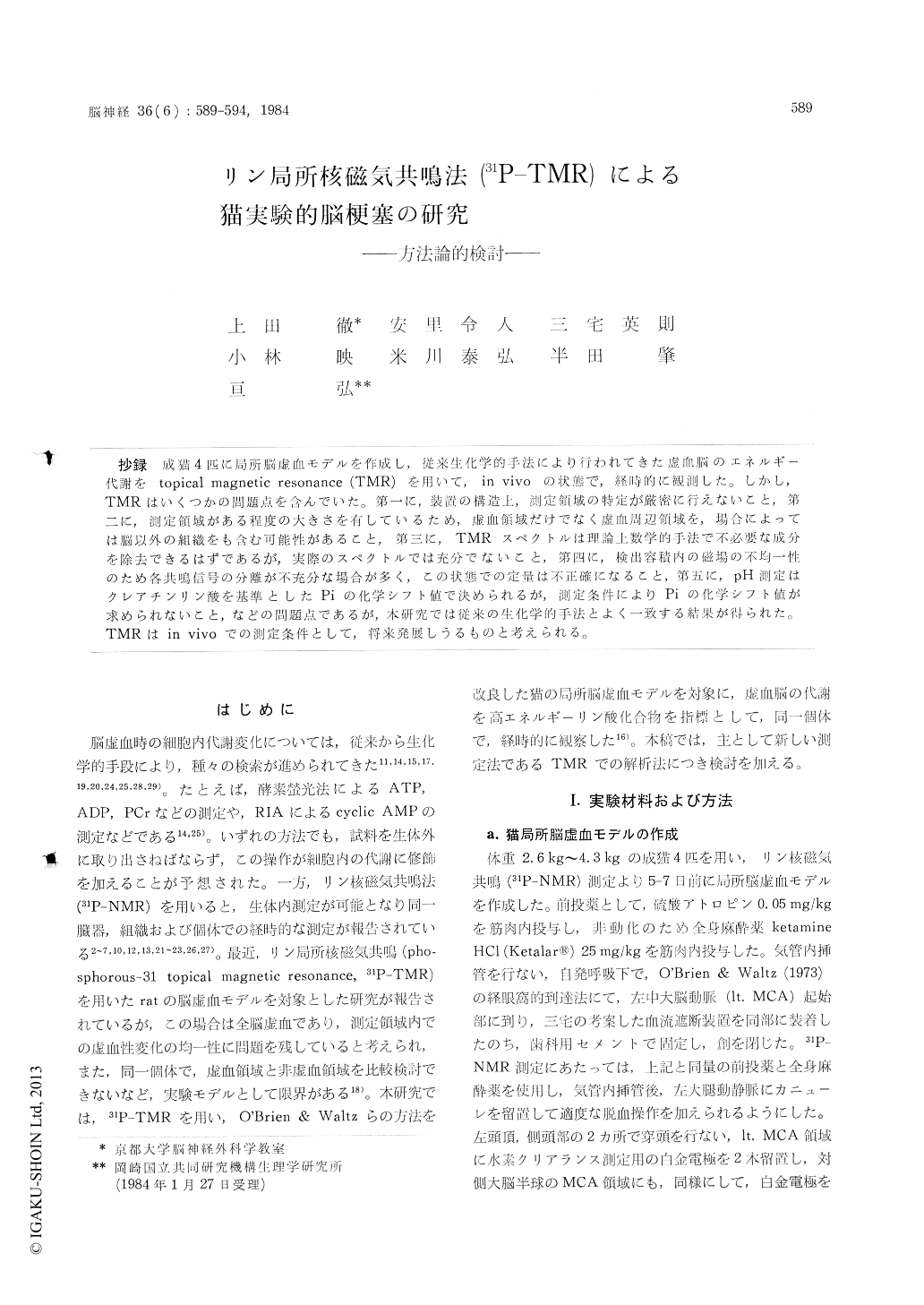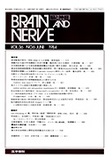Japanese
English
- 有料閲覧
- Abstract 文献概要
- 1ページ目 Look Inside
抄録 成猫4匹に局所脳虚血モデルを作成し,従来生化学的手法により行われてきた虚血脳のエネルギー代謝をtopical magnetic resonance (TMR)を用いて,in vivoの状態で.経時的に観測した。しかし,TMRはいくつかの問題点を含んでいた。第一に,装置の構造上,測定領域の特定が厳密に行えないこと,第二に,測定領域がある程度の大きさを有しているため,虚血領域だけでなく虚血周辺領域を,場合によっては脳以外の組織をも含む可能性があること,第三に,TMRスペクトルは理論上数学的手法で不必要な成分を除去できるはずであるが,実際のスペクトルでは充分でないこと,第四に,検出容積内の磁場の不均一性のため各共鳴信号の分離が不充分な場合が多く,この状態での定量は不正確になること,第五に,pH測定はクレアチンリン酸を基準としたPiの化学シフト値で決められるが,測定条件によりPiの化学シフト値が求められないこと,などの問題点であるが,本研究では従来の生化学的手法とよく一致する結果が得られた.TMRはin vivoでの測定条件として,将来発展しうるものと考えられる。
Metabolic changes in the ischemic brains of cats were investigated in vivo with high energy phosphate compounds as parameters by using atopical magnetic resonance (TMR) spectrometer.
The experimental focal cerebral ischemia was made in four cats by modifying the method of O'Brien and Waltz. The stem of left middle cerebral artery was exposed and set the occlusive device 5-7 days before the in vivo measurement. 31P-NMR spectrum was taken under general anesthesia with Ketamine HCI and with decreased blood flow.
The following points must be considered in obtaining 31P-TMR spectrum in a cat brain:
Firstly, as much muscle as possible must be removed from the detective area because it contains phosphate compounds. Our experiment showed that bone and blood had little or no effect on the 31P-TMR spectrum.
Secondly, although same procedure was repeated, it was difficult to obtain constant ischemic lesion; in site and size. The detective area in setting was not changed in the particular area. However there was a possibility of the detective area also including various non-ischemic regions.
Thirdly, 31P-TMR spectrum had several peaks in a cat brain; which were sugar phosphate, inorganic phosphate, phosphodiesters, phosphocrea-tine, γ-, α-, β-ATP in the pre-occlusive con-ditions. These peaks did not appear in clear volume separation with one another.We drew the perpendicular line from through between two neighbour peaks to the horizontal base line and artificially divided two peaks. The area of each peak did not represent correctly the density of each component.
Fourthly, unnecessary components were ration-alistically excluded from the 'raw' spectrum. In fact, the result of experiment, they could not be completely removed mathematically.
Fifthly, pH measurement were possible from the correlation between the chemical shifts of Pi and PCr. The value of chemical shift of Pi moved to a higher resonant frequency and overlapped with that of PDE. Thus, the value could not be decided precisely.
The above problems and others must be taken into consideration when 31P-TMR spectrum analyse is performed in the cerebral infarction. However, PCr/ATP ratio from these spectrums was 1.84. The result was nearly equal to the ratio from the biochemical method using the same ischemic models.
It is hoped that the TMR may become a useful tool for in vivo measurement.

Copyright © 1984, Igaku-Shoin Ltd. All rights reserved.


